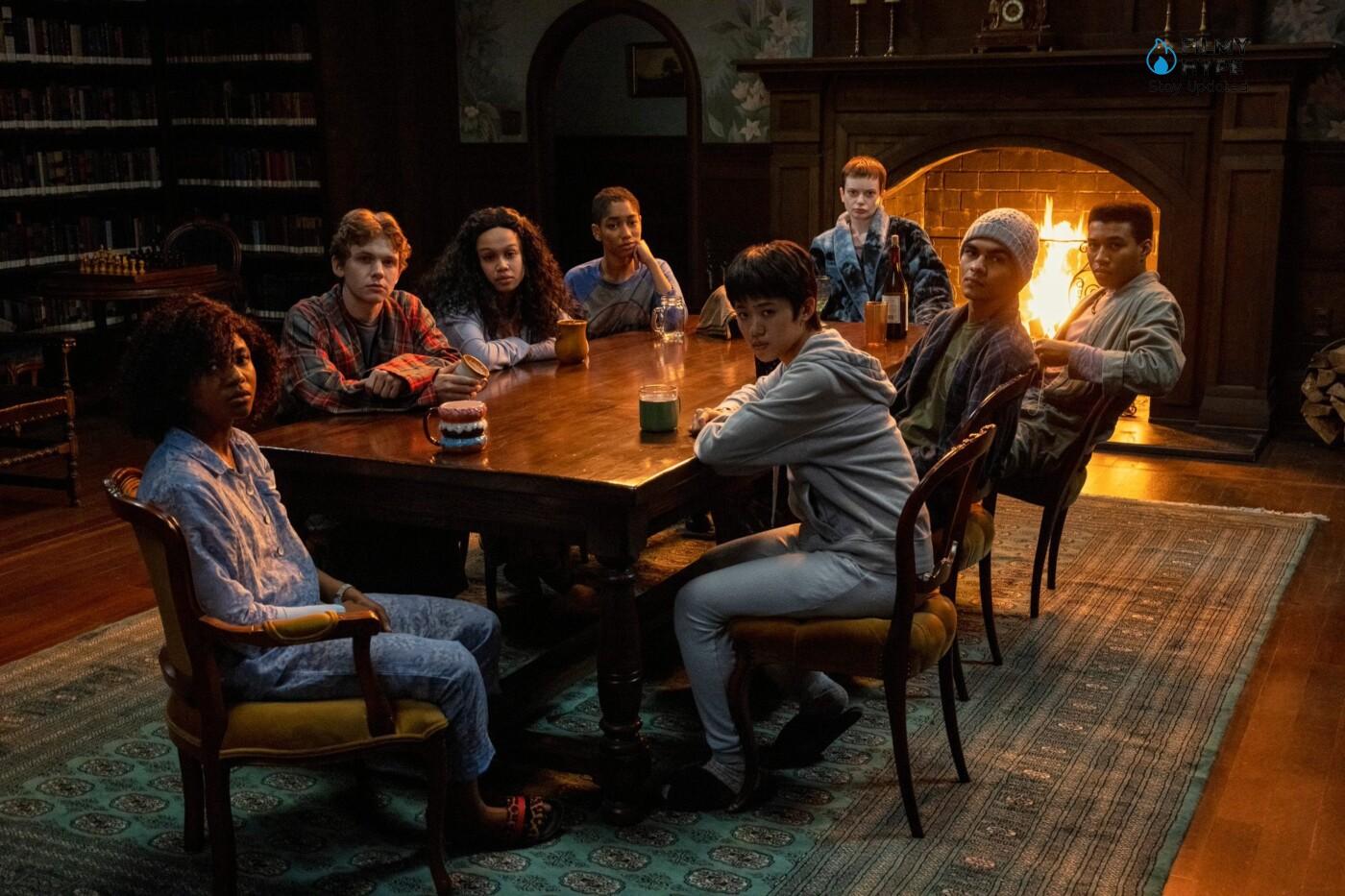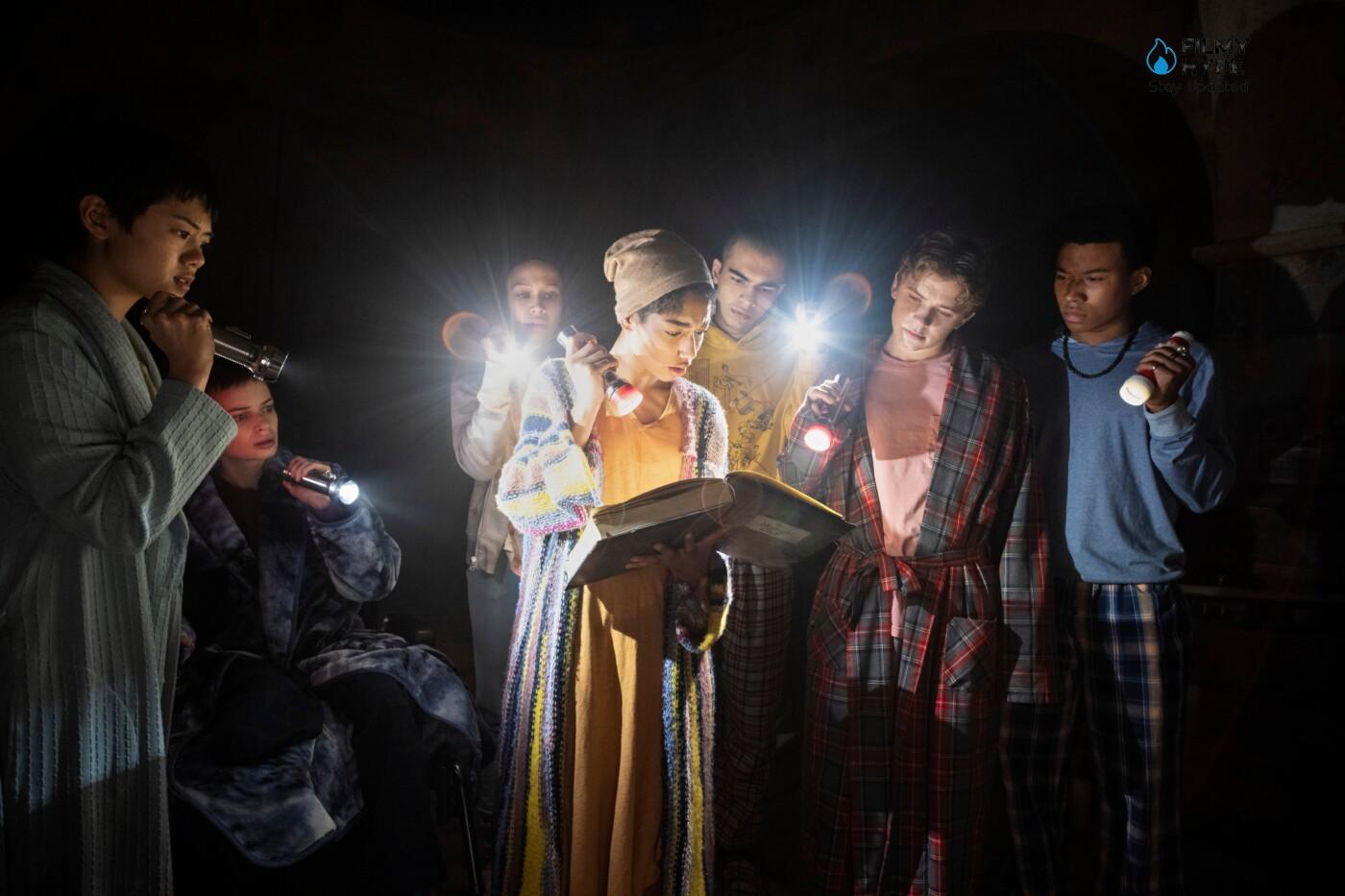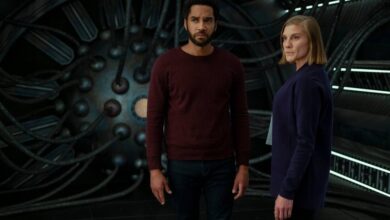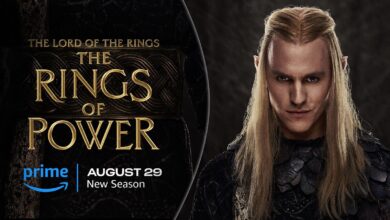The Midnight Club Review: Between Life and Death The Gothic Bridge Of Worlds | Filmyhype
Cast: Iman Benson, Igby Rigney, Ruth Codd, Aya Furukawa
Created By: Mike Flanagan
Streaming Platform: Netflix
Filmyhype.com Ratings: 3.5/5 (three and a half stars)
And it is evident that Flanagan has every intention of keeping this record regarding horror series very tightly: so much so that he is already working on The Fall of the House of Usher, taken by Edgard Allan Poe and scheduled for 2023. Yet with this his brand-new series – again from Netflix – chooses to change its target and address a younger audience. A courageous but also risky choice that, as we will see in this review of The Midnight Club, brings with it a few too many problems, but which at the same time could also thrill and involve a teen audience less accustomed to the horror genre but perhaps more interested in other themes and dynamics. First of all, a very important aspect must be considered. Compared to previous works, mainly drawn from more mature novels, such as the nightmare of Hill House by Shirley Jackson or Turn of the screw by one of the greatest exponents of the nineteenth-century gothic novel, Henry James, or generated by the same mind of Flanagan and always with a deeper and more adult hold.

The Midnight Club is based on the homonymous children’s novel by Christopher Pike, one of the most prolific authors of horror fiction for children. Although everyone can enjoy everything if what we are seeing is valid or, in any case, of our interest, it is obvious that in terms of language and structure, something will have to change if the reference work is a novel for children. Surely Goosebumps don’t expect to see Don’t Open That Door, to be clear. Similarly, for The Midnight Club, one should not expect a type of story like that of Hill House. Undoubtedly Flanagan, who co-wrote all the episodes and directed the first two, maintains the leaden and disturbing atmosphere as one would expect from a TV series of this type, but with a lighter narrative, with dynamics that do much more. leverages on some sentimental, adventurous, and curious situations typical of the adolescent world.
The Midnight Club Review: The Story
It was a dark and stormy night. Yes, the storyline of The Midnight Club might begin this way, but that’s not exactly how it goes. There will certainly be dark and stormy nights, but this is not the beginning. Actually: it was a night of joy and revelry before graduation and the prospect of a new and exciting life. At least, that’s what Ilonka (Iman Benson) hoped for herself. Fate, unfortunately, is cruel and mocking. And the 17-year-old is instead diagnosed with thyroid cancer that shatters all of her dreams. The first hopes that dominate, after a year of unsuccessful treatment are skepticism and, finally, surrender to a death sentence on his eighteenth birthday. Maybe she will be able to live another year or even two but not much longer. After all, we are at the beginning of the 90s and many treatments of today were still in the experimentation phase.
This puts Ilonka on the same path as a particular hospice, Brightcliffe Hospice, which welcomes only terminal adolescents, precisely to reserve a safe and secure environment for them to spend the last months of their lives. Doing some research on the long history of the place that over the decades has been reconverted differently and imaginatively, a place that for a short time even became the haunt of a strange sect, Ilonka discovers that a few decades earlier a girl like her with a terminal diagnosis managed to get out of there with the regressing tumor. Perhaps a coincidence, perhaps a miracle, yet this is enough for Ilonka as a hope to cling to tooth and nail.
To welcome her at the Brightcliffe there is a colorful group of young people, each with a handful of months of life ahead or a little more. Each with a different disease: bone cancer, uterine lymphoma, leukemia, aids. Each with their hope. Yet all united by a small and intriguing secret: a midnight club that meets every night, secretly with the director and nurses, in the hospice lounge, by the fire, to be able to tell thrilling stories. The purpose of the stories is not only to challenge the imagination but also to elaborate on one’s grief, pain and despair, through creepy and invented stories that, after all, speak of the same narrators of the story and those present at the table. But there is also something more existential and profound that binds the boys of the club, which is a promise.
The Midnight Club Review and Analysis
If there is a common thread that we can find in the serial works of Flanagan arrived on Netflix it is certainly the use of gothic as a metaphor between life and death. In Flanagan’s transpositions and representations, the veil is always very thin between the world of the living and that of the dead, as we also see in this review of The Midnight Club. Although through someone else’s stories, Mike Flanagan always finds a way to make people think about these two concepts. After all, the fear of death is a universal concept. A shared feeling. And yet, what sense is there in fear of death to such an extent as to not be able to live existence? Our protagonists ask this a bit along this journey that lasted ten episodes for us. Certainly, a few are too many, considering that the narrative has a notable setback in the third to last episode, the eighth.
The story becomes dilated, the same stories of the boys lose consistency, and the meat on the fire doubles, closing everything with a watered-down finish that we cannot even define as such. Does Mike Flanagan open to the possibility of a second season or does he just want to let us rack our brains with an enigmatic closure? Whatever the answer, it is still a mistake. Up to the eighth episode (in some ways included), The Midnight Club is a story of resistance, of pain, of life. It is a story of injustice because yes, we all must die, but when we are destined to die so young, when we still have our whole life ahead, everything becomes more bitter, more ferocious. And, as we said at the beginning, each of these cut flowers clings to hope, clings to those stories told in the middle of the night, giving some thrills but also telling something more about itself.

The difficulty of choral narratives is that you risk leaving someone behind, some characters in the background. Fortunately, this does not happen in The Midnight Club. As much as Ilonka may seem to be the center, who certainly plays a central role, especially in the mysteries related to the Hospice, it must be said that each of those present is worthily represented. And even those who seem to be an enigma, have a way of being discovered, telling themselves through stories. Stories that tell of killers, witches, ghosts, revenge, and miracles. Stories that are staged with the same faces of the participants of the midnight club, that of known or unknown parents, and those of the hospice staff. Everything takes on its dimension, carrying on a narrative that knows how to branch out in several directions, exploring the interior of whoever holds the command. But at the end of it all, what matters is the immense empathy, sensitivity and respect that Flanagan once again puts into telling a theme as complex and dark as death.
Although flanked by a cast of multiple veterans, some of them already present in previous works by Flanagan such as Zach Gilford, Rahul Kohli, Samantha Sloyan (always disturbing), without forgetting Heather Langenkamp, iconic scream queen of Nightmare on Elm Street, to hold everything how surely is the cast of very young actors. All extremely prepared, in part, but above all united. In such a choral story where the strength of the group also becomes the fuel of the story, harmony is fundamental and if that is lacking, everything collapses like a house of cards. Fortunately, this is not the case here. Although everyone has their own space and is put to the test in multiple roles (you will see) some are not too simple, where the use of violence, brutality, and terror will not be lacking, to stand out for their interpretative skills are Iman Benson whose Ilonka stubborn, dreamer and courageous is a bit ‘the ferryman of the story and Ruth Codd with her Ania.
Ania is one of those classic characters who love and hate each other. Those false hearts of stone hide much more fragility than they want to show. Ania is one of those characters who confront her limits but at the same time brings out the best in those around her, even if she may not seem like it. Wonderful, and Ruth Codd can go into the bowels of this character, exposing her in every nuance of her. In addition, it should also be emphasized her sensitivity in representing a disabled character through a disabled actress without ever falling into skill, moralism, rhetoric, or stereotype. In each character, there is great care linked to himself, his orientation, culture and religion. There is an authentic representation work that does not pass through the classic checklist, but rather, using the frame of the 90s, normalizes every nuance of the human being, making every difference the strength of each character.
The Midnight Club is, after all, a complex tale. Maybe too much. A story within stories which in turn tells yet other stories. A play on words that is a bit articulate but that well embodies the meaning of this interesting, exciting, and at times even frightening TV series but not successful. We do not dare to compare it with the original text also because, despite his great fame, Christopher Pike in Italy is very badly distributed. We do not know if the choice to complicate things is his or not, the fact is that the series moves on too many lines, going to thicken them from episode to episode.
On the one hand, there are the stories told by the boys, the creepy and distressing imaginaries that know how to be suggestive both in writing and in directing, certainly giving something more than the classic goosebumps spooky tales .by RL Stine; on the other hand, there are the stories of the boys, especially that of Ilonka, their battle between life and death, or rather their trying to make the transition from one state to another more “pleasant”, well aware of having an irreversible destiny; and on the other side, there are the thousand mysteries of Brightcliffe Hospice. Ghosts roam the rooms, hidden basements used as altars of pagan rituals, old diaries that seem to hide the secret to eternal life, archaic symbols, and sects. What’s real? What’s fake?
At some point, it almost seems that an answer to all this is being given. And it is also a very interesting answer, which reflects precisely on the basic theme of the series: what are we willing to believe, to cling to, in order not to give in to the fear of death? Just to believe in another possibility? Wedding ring. Superstition. Herbal teas. There is no right answer, anything is fine if you do it after you come to terms with the reality of the facts. The rest can only make it less… unpleasant. But then everything is called into question, even in a rather chaotic way. The story loses its bite, the episodes of rhythm, and the direction becomes flat, no longer suggestive as before, forgetting even those shivers transmitted previously. The ending is completely anticlimactic and even the main theme seems more incoherent.
Although all this does not take away the enjoyable and genuinely spooky dimension of the series, while still managing to excite and involve empathically, the fact remains that it is not a little difficult to get to the end. The series takes the viewer a bit for exhaustion, announcing false endings and taking a long time to get to the real one which, as mentioned above, is not even there. The sense of satisfaction of the closure of the story is missing, of an answer to the questions that wander, wander without ever finding a dimension. More than a real ending, The Midnight Club closes with a draft that hardly manages to be a suggestion. It does not convince, it does not arrive, and the surprise is not even the most pleasant, but it leaves that sense of frustration that makes the whole story lose its intensity. A great pity, but we are sure that in any case the good Flanagan some shiver and a tear will be able to give it to you again this time.
The Midnight Club Review: The Last Words
The Midnight Club uses elements of spooky storytelling for teens, crafting a choral story that reflects on life and death, injustice and the acceptance of things that are bigger than us. He does it with tenderness, gentleness and lightheartedness, but also the bitterness of receiving such a fatal verdict when one is too young. At the same time, he uses spooky atmospheres to make everything more suggestive. Too bad that, in the final episodes, the series frays, loses cohesion and even our characters remain too flattened in the background. The Midnight Club is a very different work from Mike Flanagan’s previous ones, but that’s certainly not the problem with the series. Also, the choral nature of the story, as well as the playing with genres, works very well, thanks to a really excellent and very young cast. The problem, however, lies in the setting, in its desire to create horror and a mysterious atmosphere at any cost, without ever getting to the bottom. For this reason, we end up watching the first episodes with curiosity, maybe we get excited about a well-built central part, but inevitably we are disappointed by a grand finale that never comes. Not to be thrown away, but it remains a missed opportunity.







